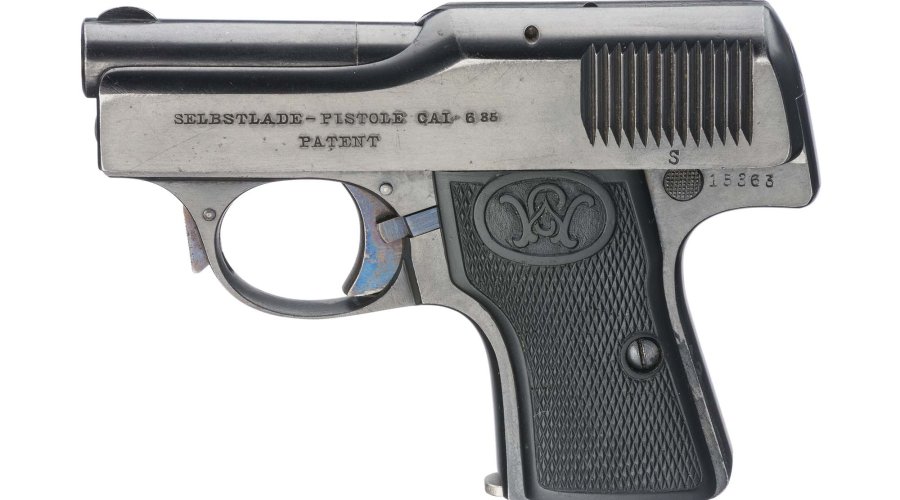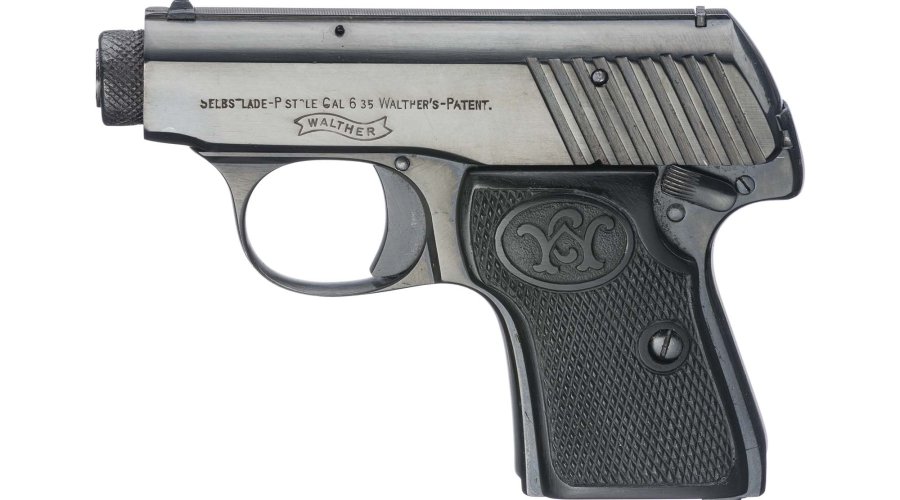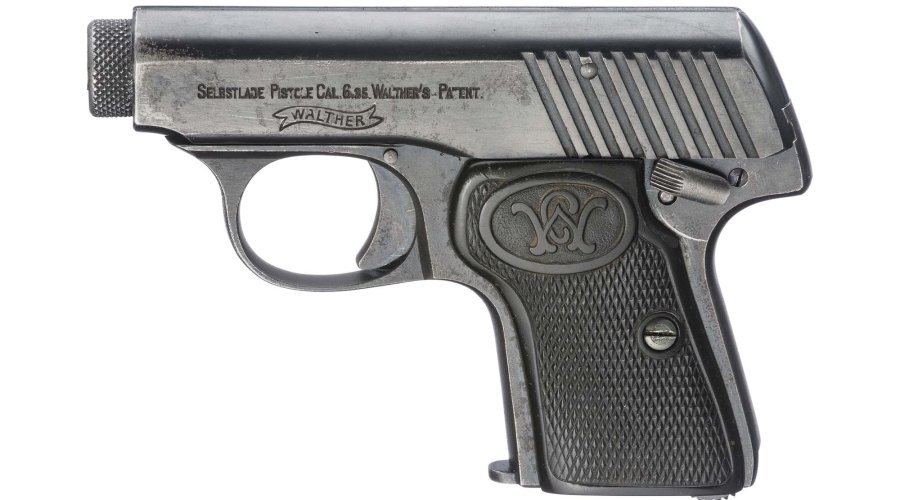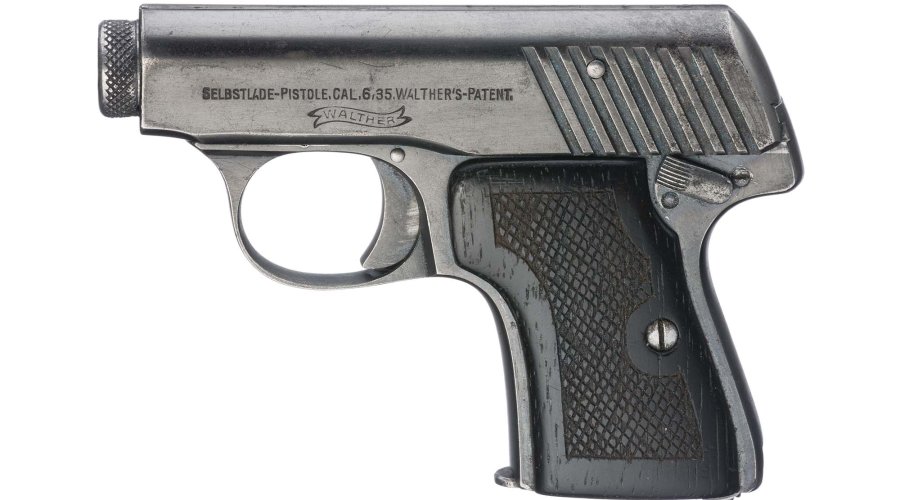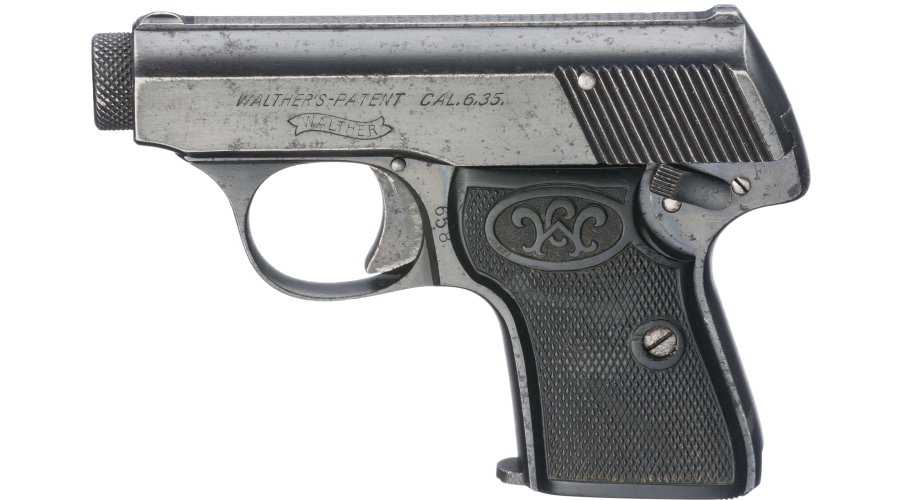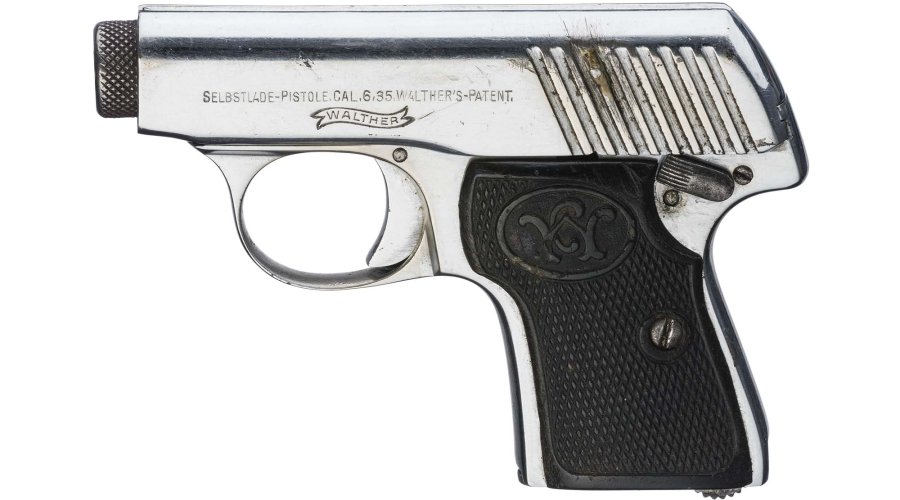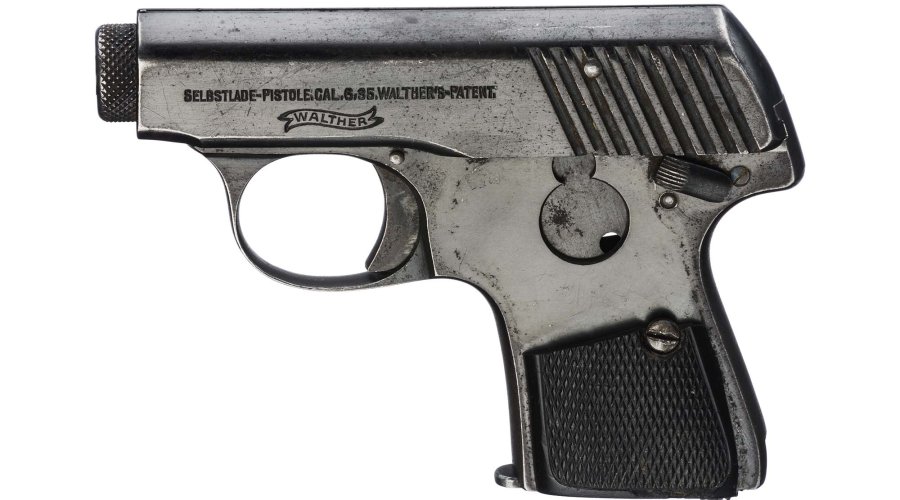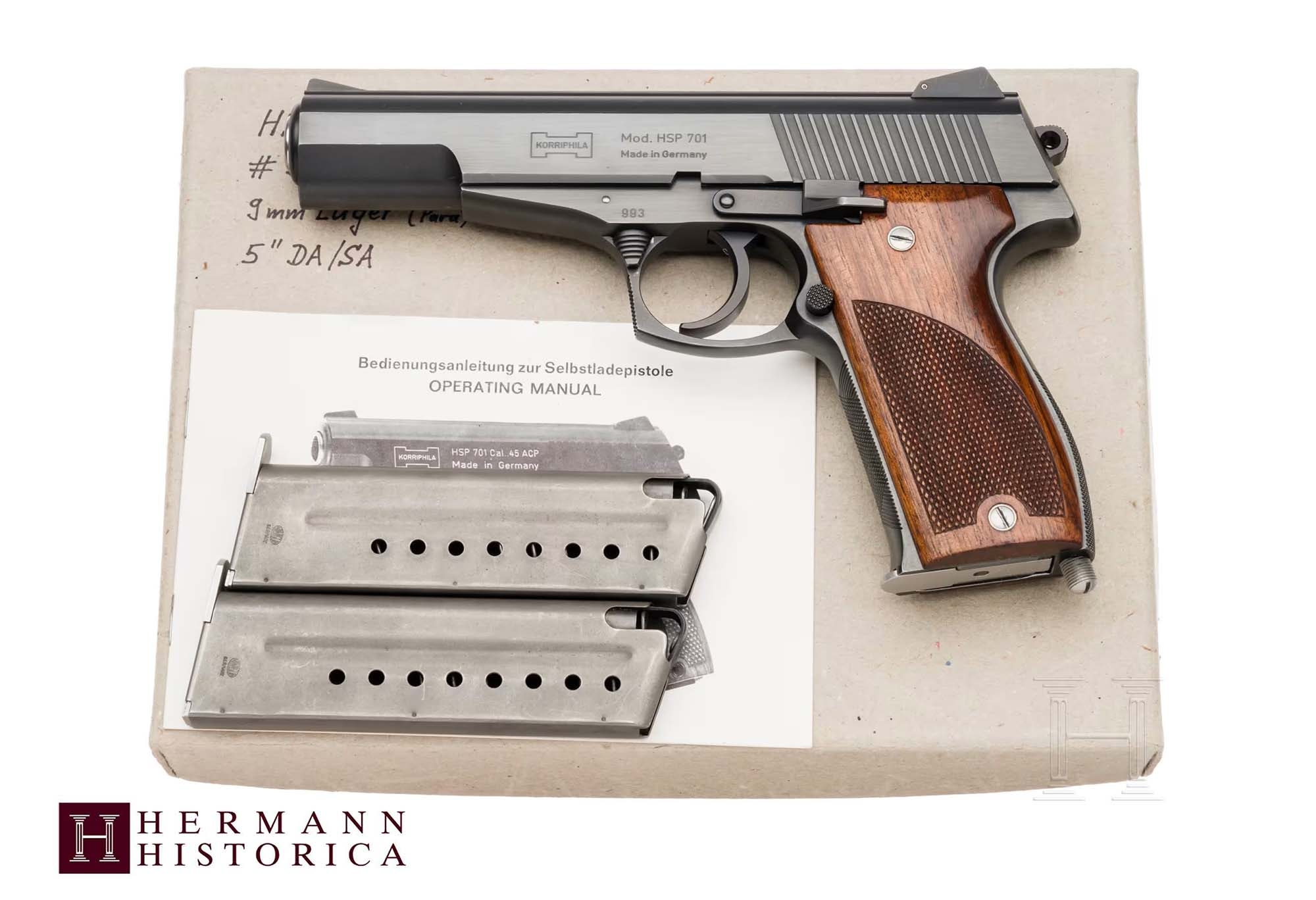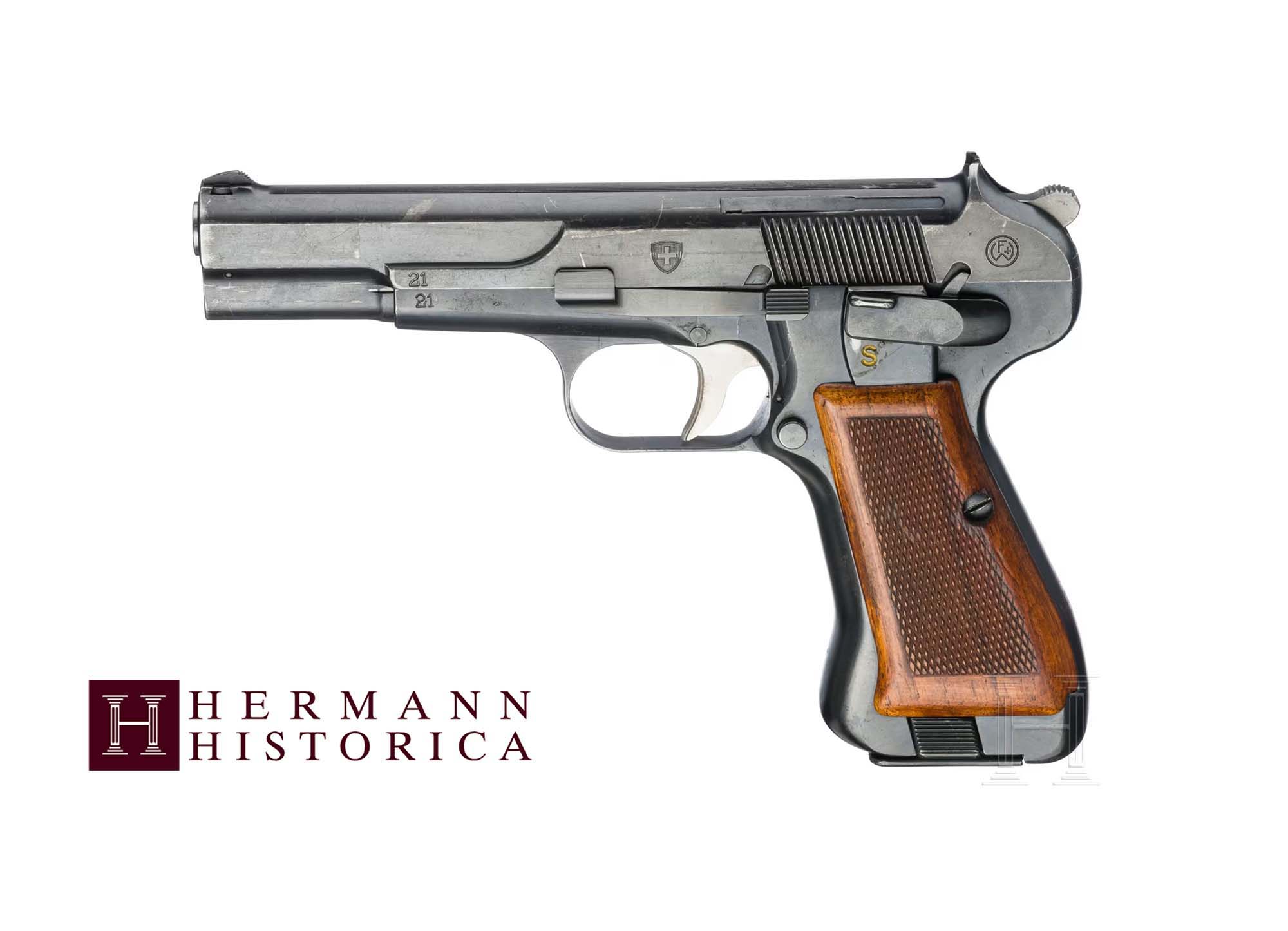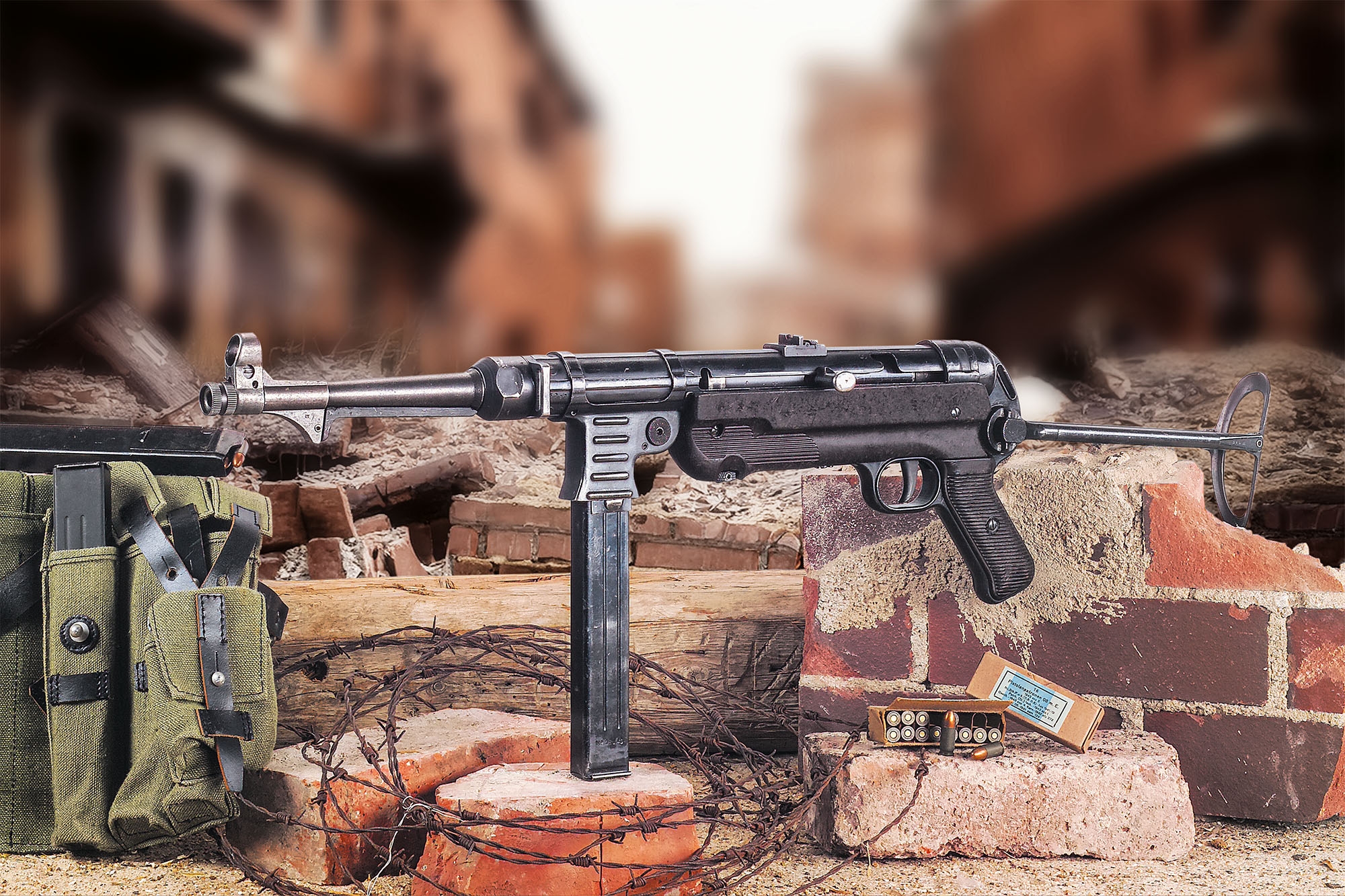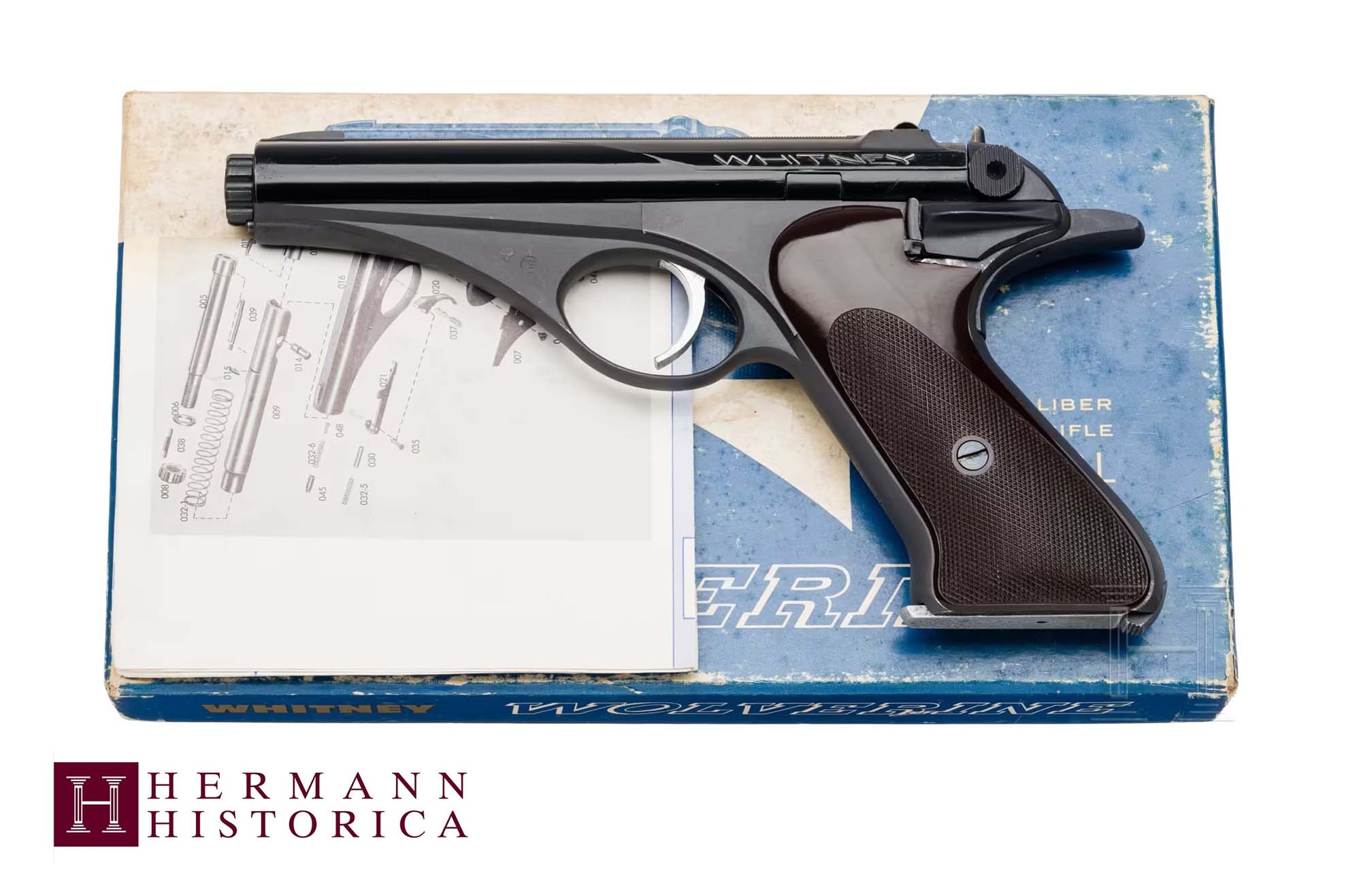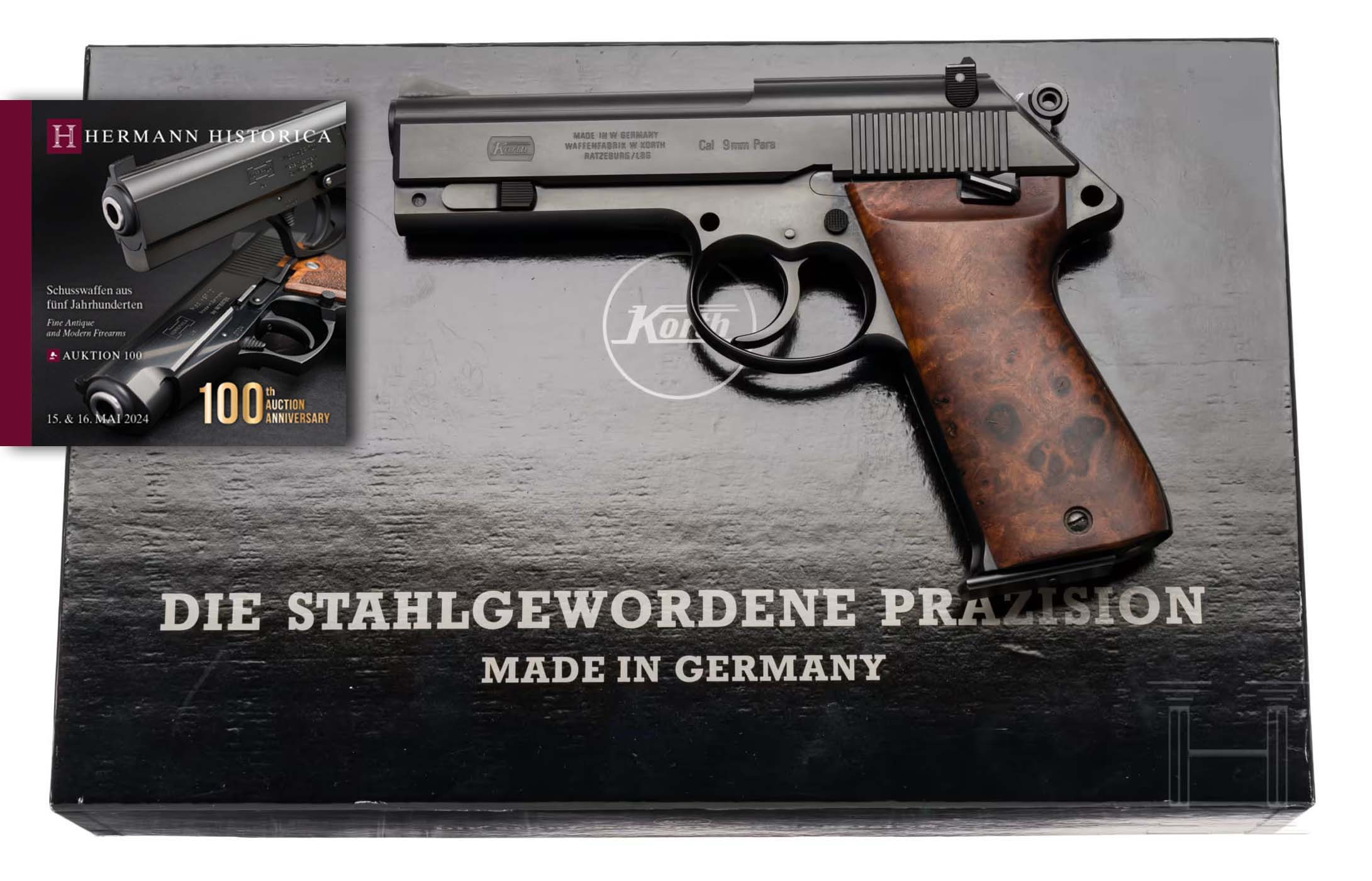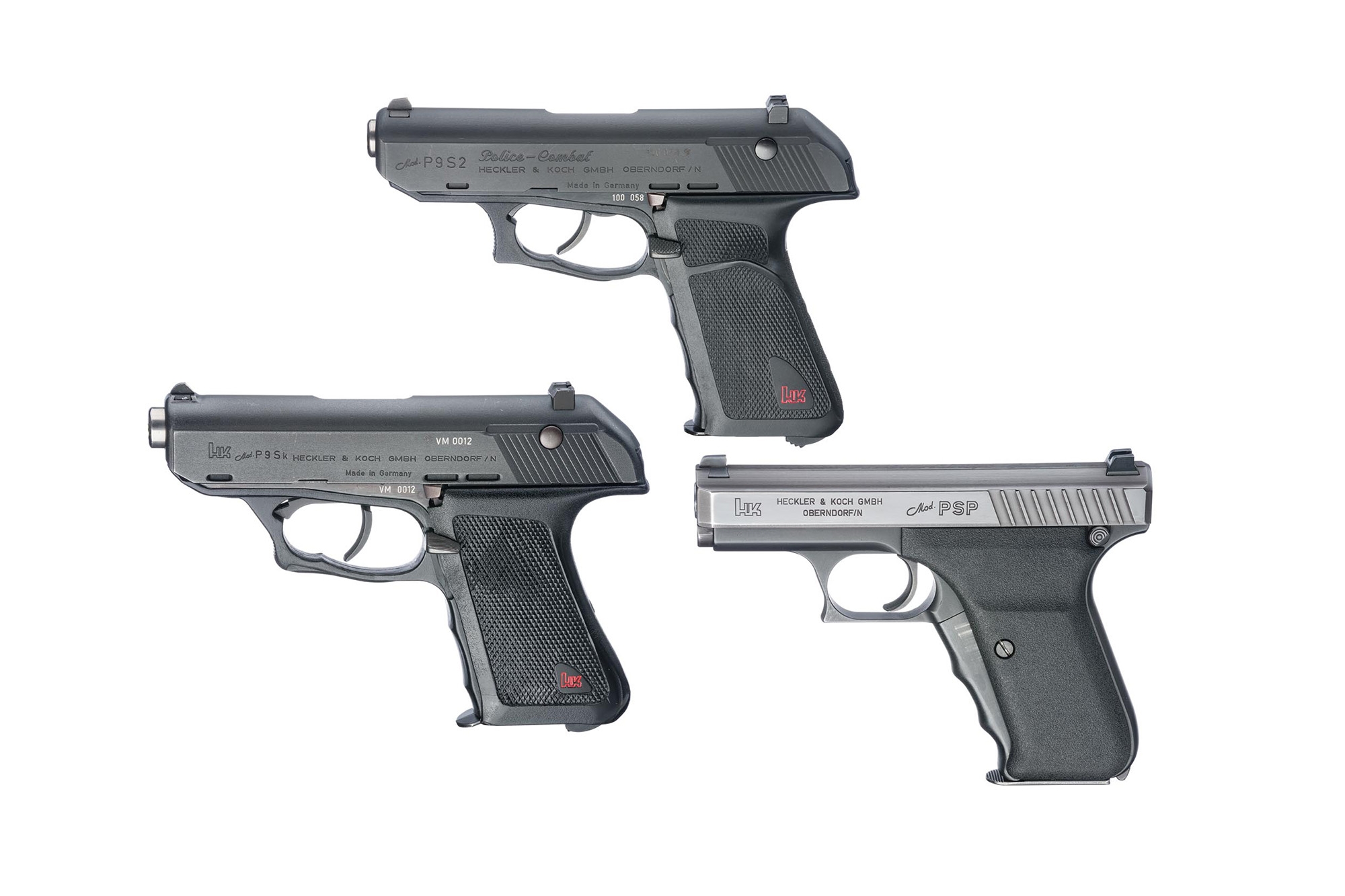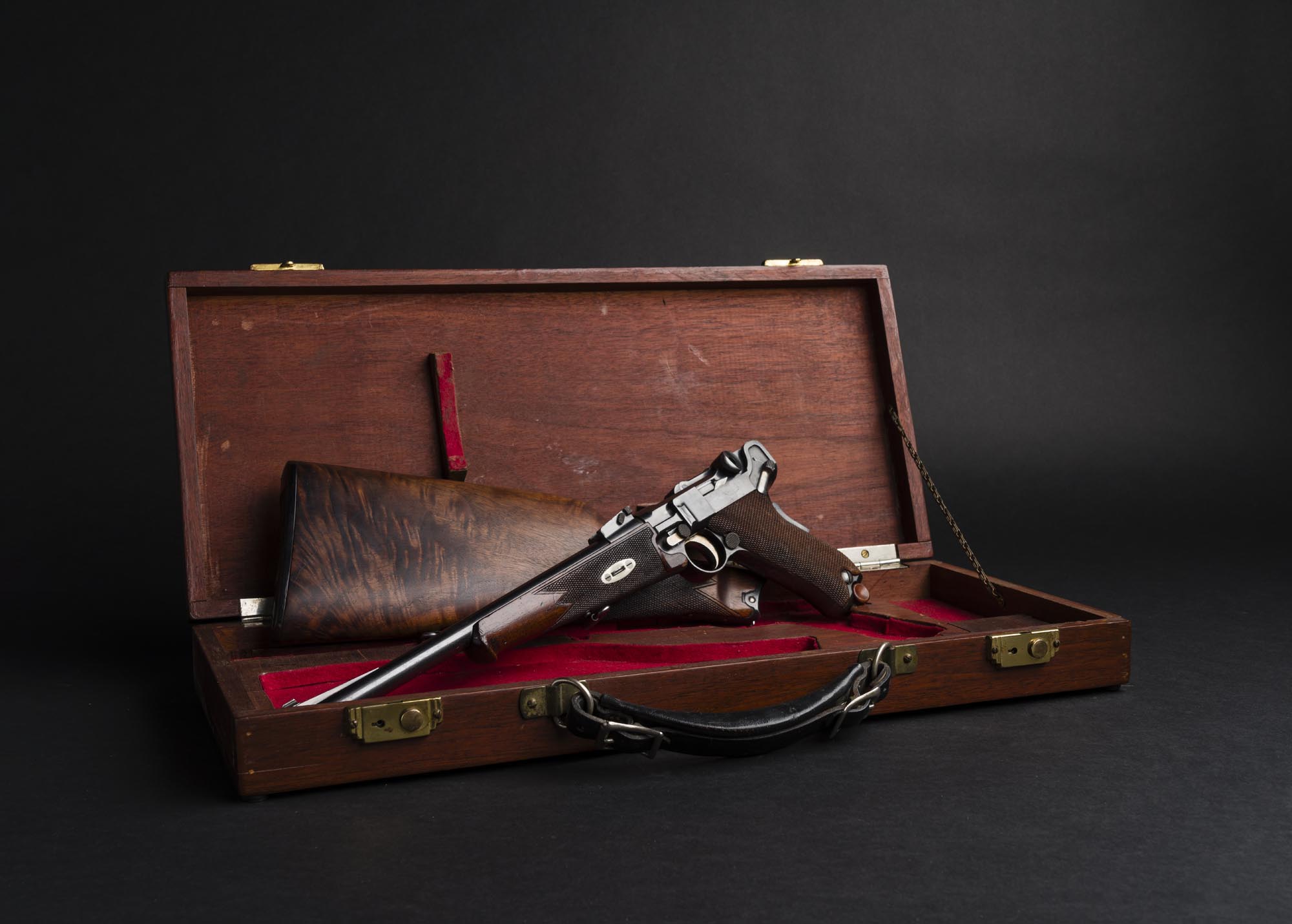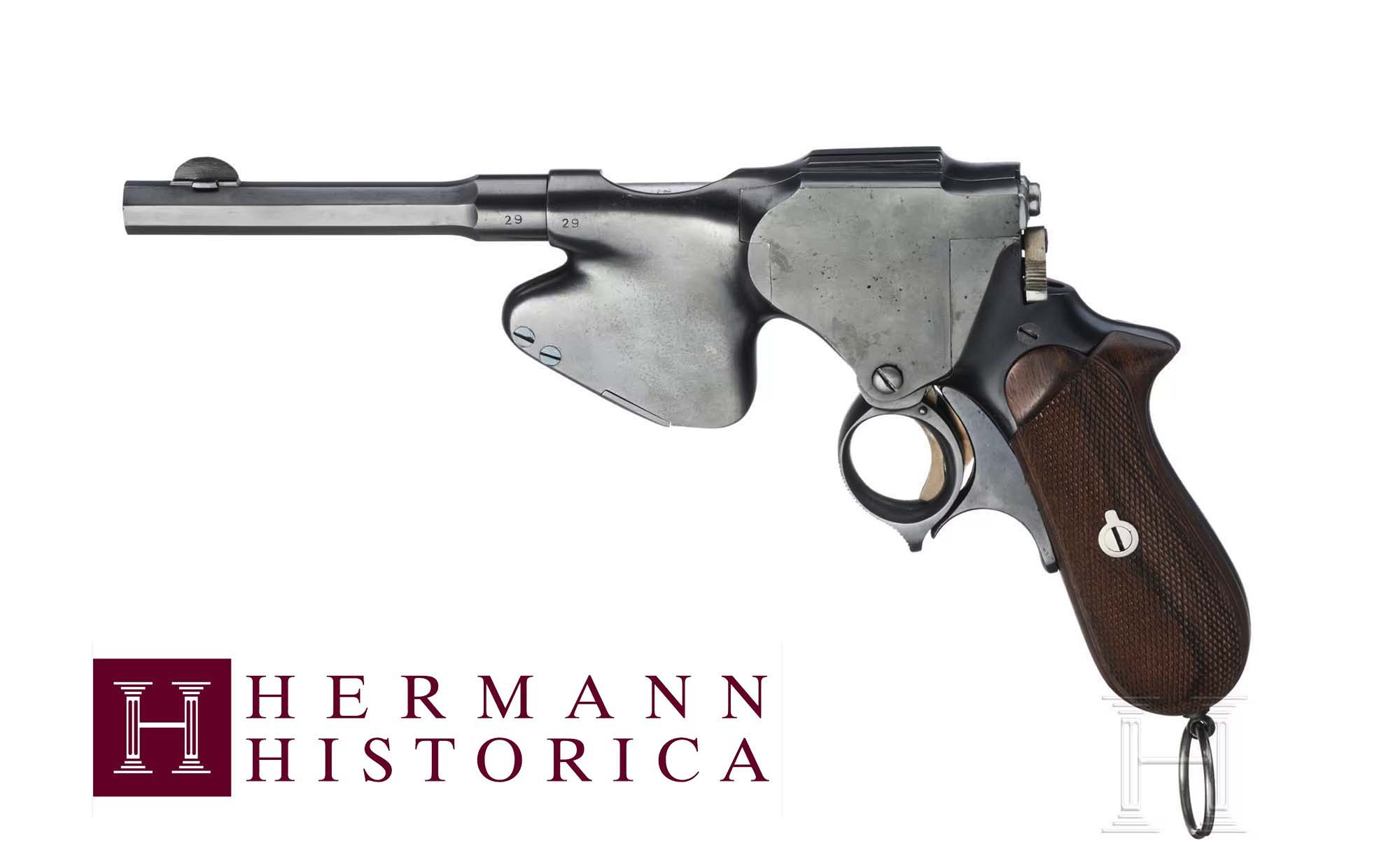Auction number one hundred at Hermann Historica was a great success and saw some amazing collectors' items change hands, such as a Korth 13E semi-automatic pistol with serial number 003 for the handsome sum of 42,000 euros. If you missed it, you can go and have a look at the article we dedicated to it, but don't linger too long because the online catalogue of the "Fine Antique and Modern Firearms" auction, which will be held online only from July 10 to 11, 2024, is already available. As usual, the online catalogue can be browsed on the company's website.
Hermann Historica July 10-11 auction, interesting and affordable pieces
After the glut of very expensive rarities, reserved for the pockets of a few wealthy collectors, auction number 101 marks a return of the Bavarian house to more interesting offerings for collectors with a limited budget, but eager to add an interesting piece in excellent condition to their collection. We have therefore chosen to present you with a series of lots with an affordable starting price, basically those for which we at all4shooters.com would also gladly bid. In addition, we will mention a couple of pieces that we consider of particular interest for the extravagance of their design.
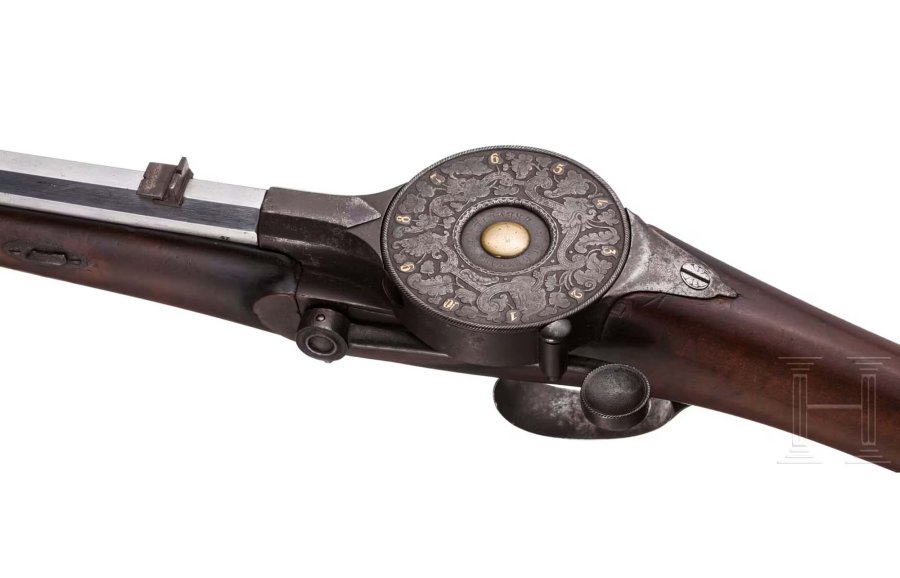
Let's start with an exception, namely a piece with a hefty starting price of 9,000 euros, which in our opinion is justified by its rarity and condition. This is lot 11196, a beautiful example of a Genhart system turret rifle with a horizontal drum magazine, produced in Liège (Belgium) in the mid-1800s. The turret system was patented in 1853 by the Swiss gunsmith Heinrich Genhart, who had moved to Belgium. This ingenious rifle features a horizontal drum magazine (turret) that held ten 9mm caliber cartridges consisting of a lead bullet, a propelling charge wrapped in tin foil and a tube primer. Operating a lever makes the turret rotate, presenting the cartridge to the breech.
At the same time, the barrel moves back a few millimetres and locks the turret, which has the chambers suitably recessed at the mouth, performing the double task of preventing the turret from rotating and sealing the gap against the exit of firing gases. Pulling the trigger releases the firing pin upwards that, through a hole in the turret, strikes the protruding section of the primer, causing the shot to go off. The cartridges for the Genhart rifle were not for sale, but a simple kit was supplied with the gun, allowing them to be made at home using lead balls, powder and tin foil, as well as the special tube primers, of course. Genhart's system was also applied to a number of pistols but did not meet with the hoped-for success, even though the gun was very well constructed and with certain features aimed at ensuring the shooter's safety. Probably the difficulty in finding primers also played its part and now the name of this ingenious inventor is remembered thanks to collectors who, it is easy to predict, will be fighting for the rifle for sale at Hermann Historica. The rifle is in good condition, with a rifled barrel with octagonal cross-section and a turret lid engraved with tendrils and mascarons and chambers numbered with gold-inlaid numerals. It is a fine testimony to the transition between muzzle-loading and breech-loading, which in this firearm finds one of its most ingenious expressions. To recap, the lot number is 11196, the starting price 9,000 euros.
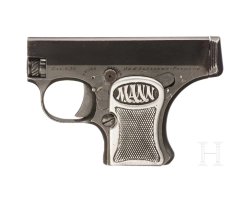
Let us move on to lot 11444, a perfect example of an original but inexpensive gun, which could be the first piece in a collection destined to grow. This is a 1920 Mann pistol in 6.35mm, which could be described as the first super-light (or sub-compact) defence pistol in history. In the 1920s, pocket pistols in 6.35mm caliber were widespread and dozens of inventors and manufacturers were trying to distinguish themselves in a huge market made up of almost identical guns, i.e. tiny blowback-operated semi-automatics. German engineer Fritz Mann decided to focus on weight reduction and designed a small pistol with a very light bolt and a delayed blowback system featuring a circular chamber groove. At the moment of firing, gas pressure forced the cartridge into the groove, effectively creating a temporary seal that allowed an action delay and left an unmistakable raised ring on the cartridge cases halfway along their length. The recoil spring was located above the barrel and to reduce the thickness as much as possible, the magazine release button was in a recess on the grip front strap. The grips were made of aluminium and the unloaded gun weighed approximately 230 grams. The Mann pistol was made from 1920 to 1923/24 in a handful of variants, and although it was indeed small and light, it failed to gain a foothold on the market, which is precisely why examples today are rather rare. The starting price for this not-so-trivial pistol is 500 euros. We would keep an eye on it.
From a very small gun we move on to a decidedly large one: with lot number 12004, an Automag Model 180 semi-automatic pistol. Chambered in .44 Automag, a rimless version of the .44 Magnum cartridge made by trimming and recalibrating .308 Winchester cases. The aim of the gun/cartridge combo was to offer the same power as the .44 Magnum, and even a few extra joules, in a semi-automatic pistol. The Automag's single-stack magazine held seven rounds, one more than a revolver cylinder; thus, the superior firepower claimed as the main selling point was not so extraordinary. The Automag was designed in 1966 by Italian-born gunsmith Max Gera and his employer, Pasadena-based entrepreneur Henry Sanford, who founded the Auto Mag Corporation with the aim of mass-producing it. The rather complex operating system is very similar to that of an AR-15 rifle. Mass production of the Automag 180 pistol began in 1970 at the Pasadena plant, in California. Despite the interest aroused by the specialised press and the appearance of the gun in a couple of blockbusters, due to the very high manufacturing costs the company closed its doors after only two years of operation and around 3,000 guns made. Over the years there have been a few attempts to revive the Automag, the last of which dates back to 2020, but here we are dealing with an example of the original production, dated 1972 and with serial number A03406, so it could be one of the last ones built by the original company. This particular model has a 6½ inch barrel but the pistol was also offered with an 8½ inch barrel. The starting price of the Automag 180 on sale at Hermann Historica is 1,200 euros.
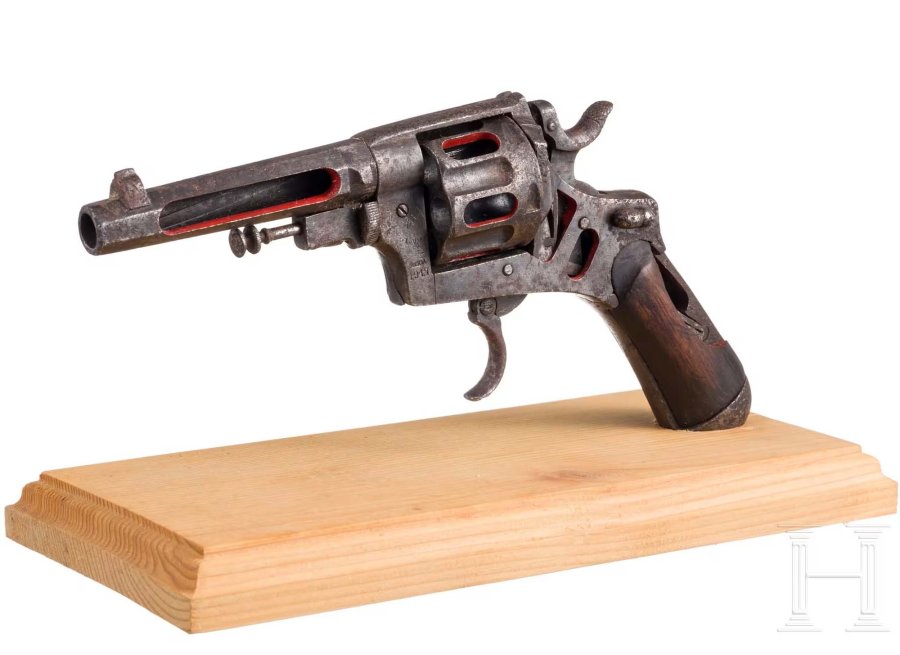
Let us continue with an object with a very modest starting price and a not exceptional state of preservation, but for Italian collectors it could be very intriguing: at lot number 12392 we find a sectioned mock-up of a service revolver made by Mida of Brescia in 1917 and marked "Mida già Castelli". It is a so-called enlisted model, with a forward-folding trigger without guard. The caliber is the 10.4 mm Italian Ordnance. The specimen has several cutaways edged with red paint to show the inside of the firing mechanism and barrel, and is mounted on a non-original wooden base. As we said, the condition is not very good, but for a starting price of 50 euros, you can't expect more.
A collection of Walther pocket pistols up for auction at Hermann Historica
Hermann Historica in this sale offers a large collection of pocket pistols made by Walther, starting with lot 11535, a model 1 in 6.35 mm Browning, with matching serial numbers 15363. The barrel has a length of 50 mm. The magazine, which is nickel-plated, has a capacity of six rounds. This is an interesting piece as it is the first Walther marked pistol, patented in 1909 and initially called "Deutsche Selbstlade Pistole Walther, Modell 1909, Kaliber 6.35". Only with the introduction of the later Model 2 pistol was it retroactively renamed "Model 1". The Walther Model 1 uses a blowback system with the barrel left partially uncovered by the slide and was a great success, gaining a good reputation for reliability, although the difficulty of disassembly was one of its shortcomings. The number of examples produced is uncertain and could range from 15,000 to 30,000. The example for sale at Hermann Historica was made in the historic Zella Mehlis factory and retains much of the original finish, with some signs of wear on the edges. The grips are black hard rubber. The starting price is very affordable: 100 euros.
Lot 11538 is a Walther Model 2, again in 6.35 mm, which is an evolution of the Model 1. Although some sources claim its genesis almost at the same time as the previous model, in all probability this pistol was mass-produced from 1912 to 1919 by the Zella Mehlis factory. This pistol was designed as a more spartan, but also somewhat bulkier version of the Model 1, which it did not, however, replace in the Walther catalog, and is of excellent quality. The example auctioned at HH has the 53-mm long barrel completely covered by the slide and the serial number 1222 and thus belongs to the first production run, recognisable by the tiny rear notch cut into the slide raised rear, later replaced by a simple groove. The starting price for this pistol in excellent condition is 240 euros. Lot 11539 is a fine example of the second version, as we said easily recognisable because the rear sight has been removed and a simple groove in the slide leads the shooter's eye to the front sight. Serial number 42420 confirms that this example belongs to later production. Production of the Model 2 also ceased around 1919, but unofficially, as the gun continued to be made with a few variations under the name Model 5. The example up for bid has a starting price of 100 euros. Lot 11540 is another Walther Model 2 in 6.35 mm with serial number 6784, thus of earlier manufacture, but already in a version without rear sight. In less good condition, it has a basic price of 100 euros. Lot 11541 is a so to say transitional specimen of the Walther Model 2, with raised rear notch and serial number 658; if it did not have a broken grip it would surely be sold at a higher base price than the 120 euro asked by Hermann Historica. Lot 11542 is a further variant with serial number 7724 of the Walther Model 2, this time with a nickel-plated finish and a starting price of 120 euros. Those wishing to dabble in restoration can instead bid on lot 11545, a Model 2 with serial number 4864, with one broken off grip and the other grip missing. Starting price is 120 euro.
After this veritable binge of pistols, we change firearm type and also continent with lot 11314, a gun that could not be more Western than that. It is in fact a .44 Henry rimfire Winchester 1866 lever action carbine. This example bears serial number 141407 and was manufactured in 1877 and has the unmistakable bronze receiver that earned it the nickname "Yellow Boy". The specimen for sale at HH has a round barrel, a beautiful period patina and on the left side of the receiver features the ring for attaching the gun to the horse's saddle. The stock is made of walnut, with a brass recoil pad. The carbine bears the signs of time but is nevertheless in good condition, with the screw securing the barrel band non original. The asking price for this not-too-common carbine is €2,200, which might seem high compared to those published so far, but is actually attractive. We anticipate that the final price will be much higher.

We remain in America with lot 12681, which could be called the forerunner of many "survival" rifles still made today. Here is the "Game Getter", a pistol featuring two barrels in .410 bore and .22 Long Rifle respectively, a folding skeleton stock and a convenient holster for carrying. Manufactured by Marble Arms & Mfg. Co. of Gladstone, Michigan in 1921, the pistol has a 15-inch long double barrel and was designed by Webster L. Marble (1854-1930), an explorer and survival pioneer who started production in 1908 and marketed it as a survival gun for those venturing into the wilds of North America, still largely hostile and unexplored at the time. After more than a hundred years, Marble Arms still offers the Game Getter to enthusiasts, but the one on sale at HH belongs to the first years of production; therefore, it is certainly more attractive to the collector. The starting price for this unusual break-action gun is 600 euros.

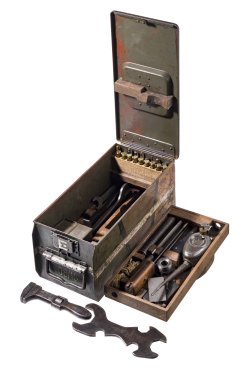
We conclude with lot 12900, which is not a firearm, but is no less attractive to the collector. This is an original tool box for the MG 08/15 machine gun that was a service weapon of the German army during the First World War. The iron box painted in camouflage colours (scratched and with traces of rust), white inscribed "E" and "08/15", contains two levels with special tools, including pliers, wiper, file, MG 08/15 wrench (marked "Becker, Remscheid"), roller wrench ("M.G.K. 2"), screwdriver, wiper stick, punches, dummy cartridges and two small sheet metal boxes containing spare parts and other small parts. Partly pitted repaired, shows signs of use and age. Box dimensions: 39x18x17 cm. Attached is an old collector's label. The MG 08/15 machine gun, based on the 1884 Maxim model, was also occasionally used during World War 2 (Eastern Front) and the contents of the boxes were modified during use. The starting price for this lot is EUR 1,500.
All that remains is to give you an appointment for 10 and 11 July 2024: we would like to remind you that the Hermann Historica auction catalogs can all be browsed online and that there are various options of placing bids in the auctions, also and above all for those who cannot physically travel to the Bavarian headquarters of the auction house.



